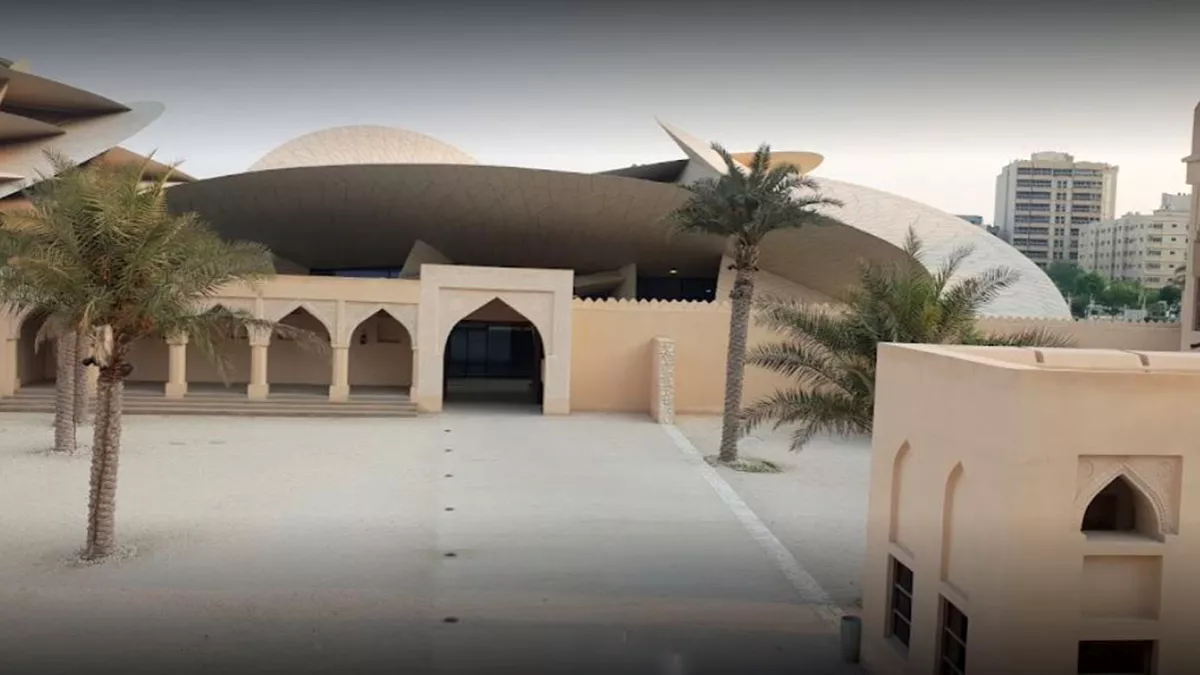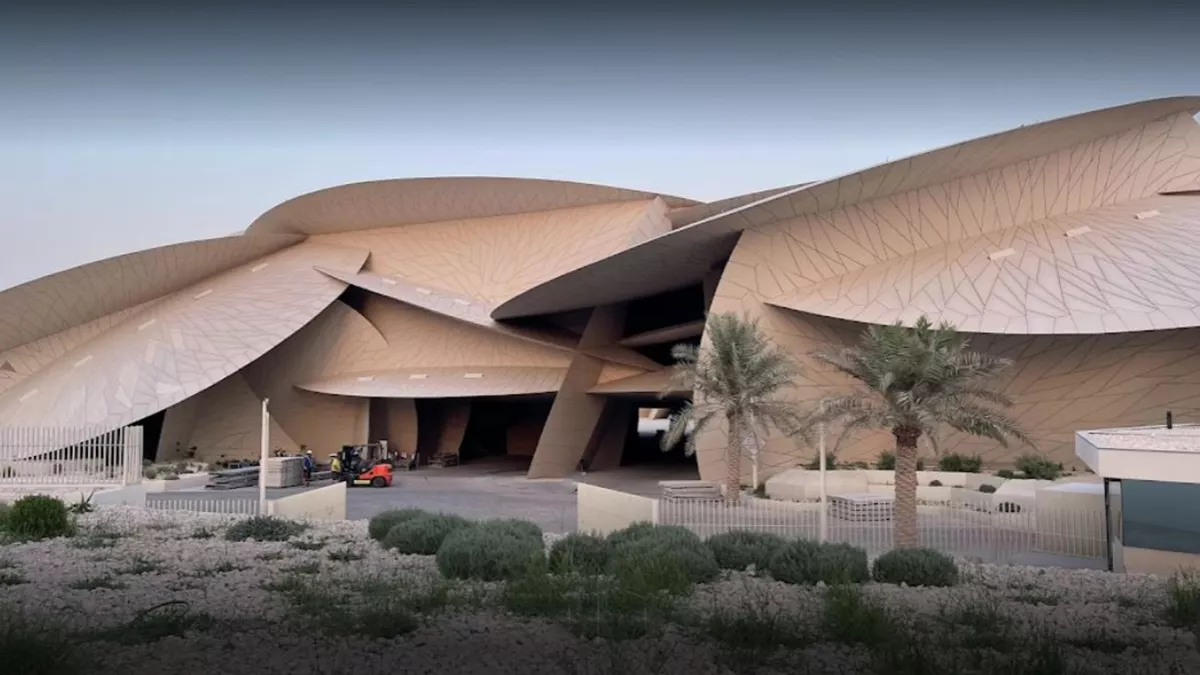Designed by Pritzker Prize-winning architect Jean Nouvel, the National Museum of Qatar draws inspiration from and recreates the naturally occurring crystal formations known as the desert rose. Built around Sheikh Abdullah bin Jassim Al-Thani’s original palace, and the seat of government for 25 years, the National Museum of Qatar gives voice to Qatar’s heritage whilst celebrating its future. It spans a whopping 430,500 square feet.
The building design is inspired by a mineral formation commonly found in the deserts of the Gulf region. The ‘desert rose’ is a rock formed when minerals crystallize in the crumbly soil just below the surface of a shallow salt basin. The system of interlocking disks surrounding the historic palace like necklace looks as if it’s been propagated organically. It incorporates exhibition spaces that fan out in an elliptical circuit around a central court, the Howsh, where outdoor cultural events will be staged. The desert-rose form evokes the culture and climate of Qatar. It emerges from the ground and merges with it. The shadows created by overhanging elements allow visitors to stroll around outside at the same time as protecting the interior from light and heat. The sand-colored concrete cladding is in harmony with the local environment.
The museum visit follows an elliptical circuit that gently rises and falls, evoking the natural undulations of the landscape. Large openings offer glimpses of the Howsh, the museum’s gardens, and Doha Bay. The permanent exhibitions, focusing on the environmental, cultural and political history of Qatar – from time immemorial to the present moment – are on display in eleven galleries. The visitor journey culminates in the old historic palace, one of the jewels of theNMoQ’s collections, which has now been restored to its original state.
The museum is surrounded by a landscaped park that reinterprets Qatari landscapes, with alternating low dunes, flooded crops, and gardens inspired by sabkhas and oases. Containing only local plants and trees, the park tells the story of Qatar and how its people lived in and cultivated the harsh environment. It includes a heritage garden of traditional plants and large grassy areas perfect for stretching out on in the evening. A 430-car parking area is seamlessly integrated into the park.
The building is composed of large interlocking disks, spherical in section, and of different diameters and varying curvatures. Some disks are ‘horizontal’ and rest on other disks. The ‘vertical’ disks constitute the building’s support and transfer the loads of the horizontal planes to the base. Like the exterior, the interior is a landscape of interlocking disks. The finishes are neutral and monochromatic. The floors are sand-colored polished concrete with tiny mineral aggregates. The vertical walls are coated in stuc-pierre, or stone stucco, traditional gypsum and lime-blended plaster that provides a stone look. Ceilings are covered in a microporous acoustic plaster sprayed on mineral wool.
- Permanent and temporary galleries
- A 220-seat auditorium
- Two cafés
- A restaurant
- A gift shop
- Separate facilities for school groups and VIPs
Working Hours
Monday
09:00 AM - 07:00 PMTuesday
09:00 AM - 07:00 PMWednesday
09:00 AM - 07:00 PMThursday
09:00 AM - 07:00 PMFriday
01:30 PM - 07:00 PMSaturday
09:00 AM - 07:00 PMSunday
09:00 AM - 07:00 PM








